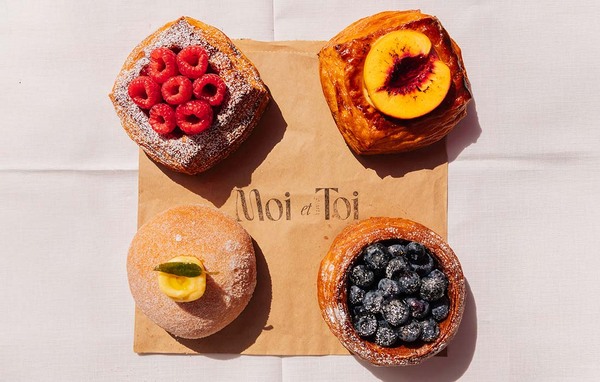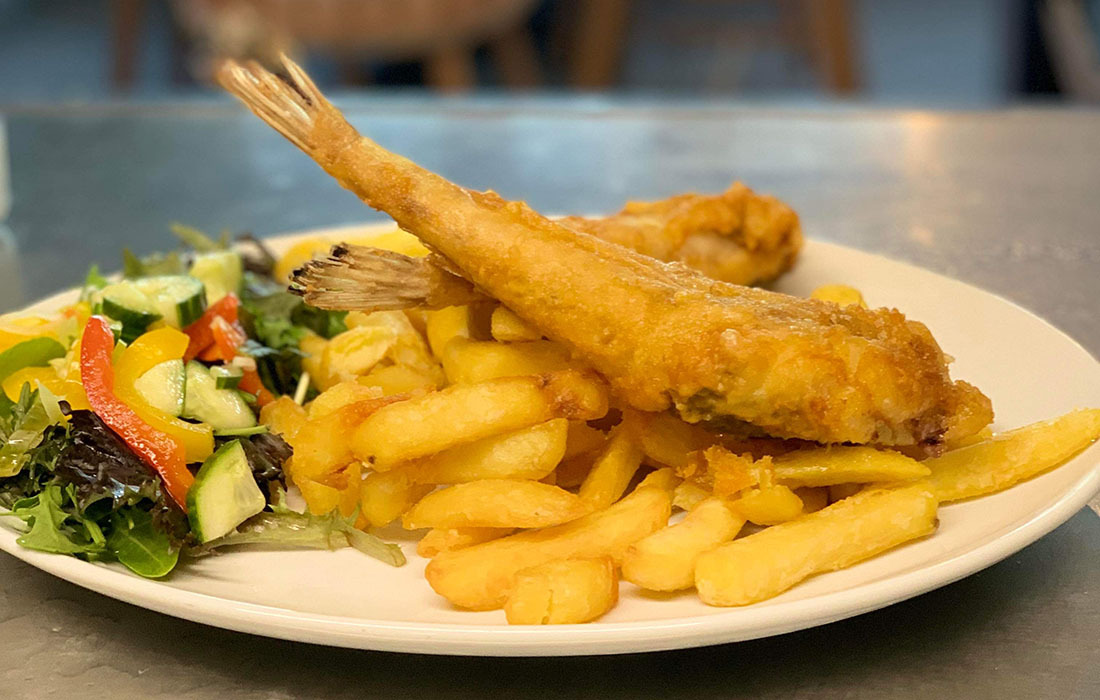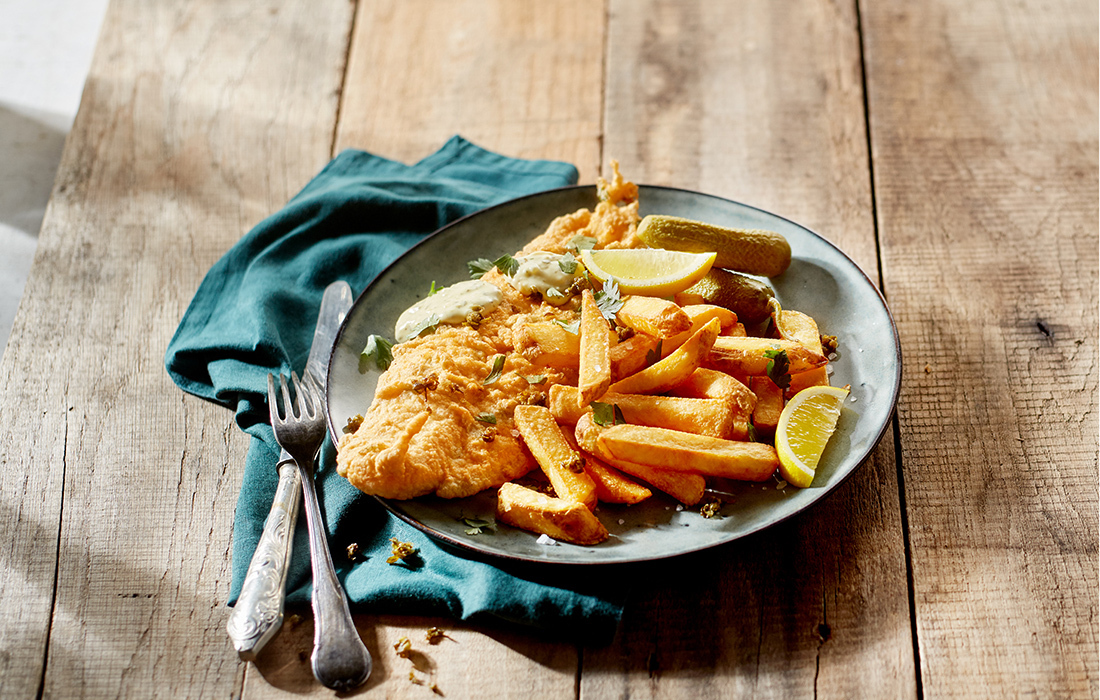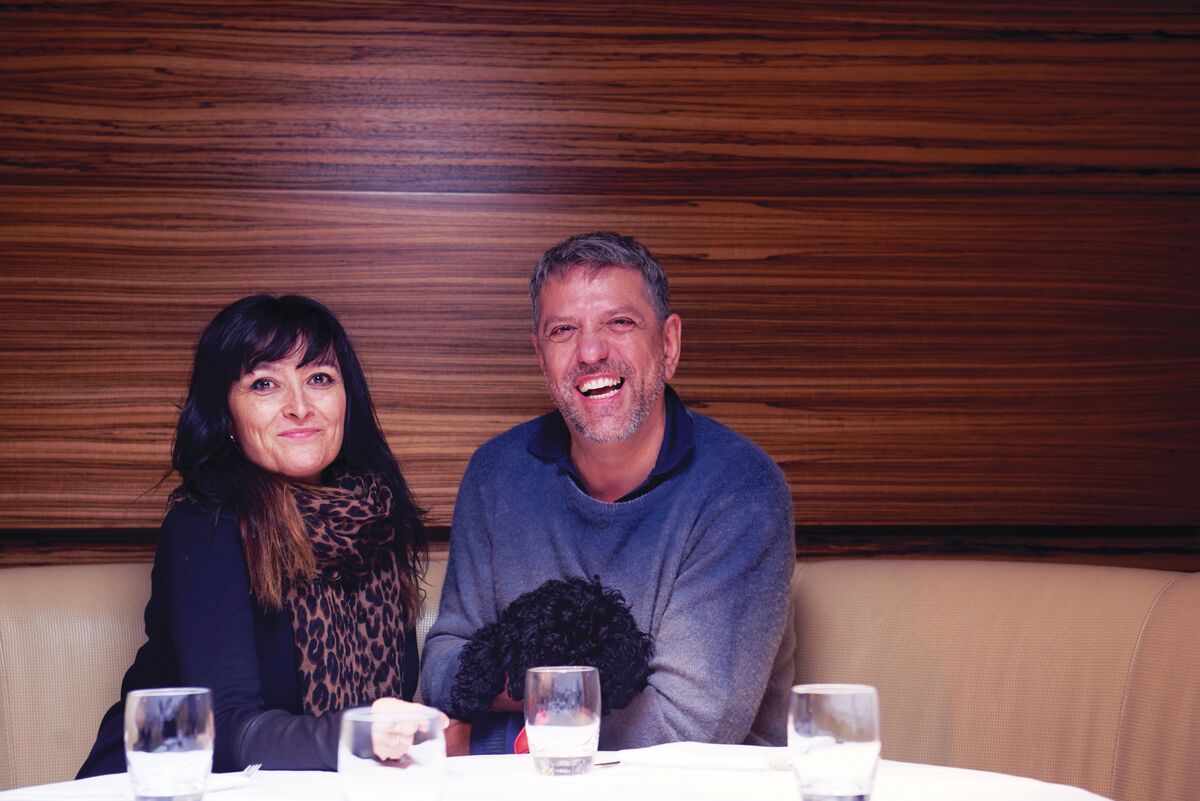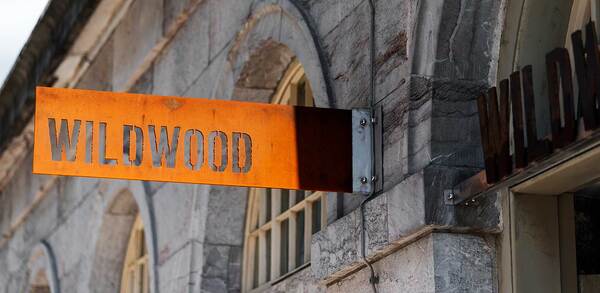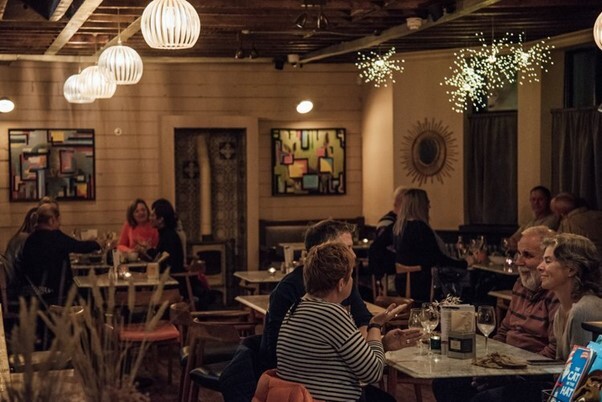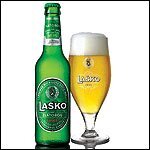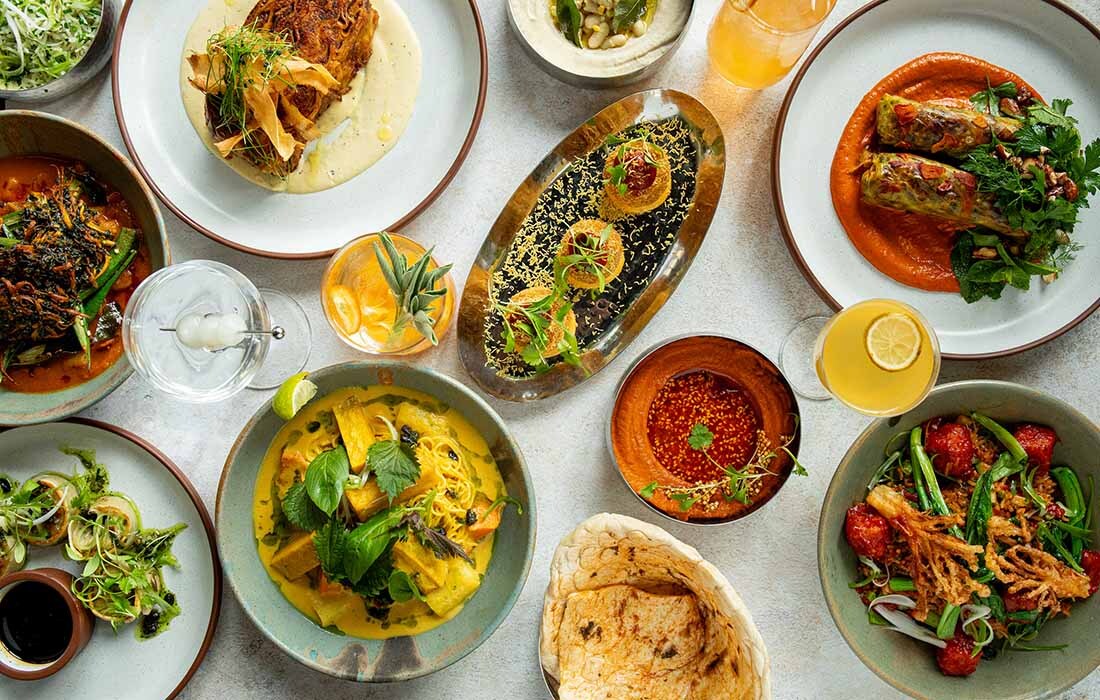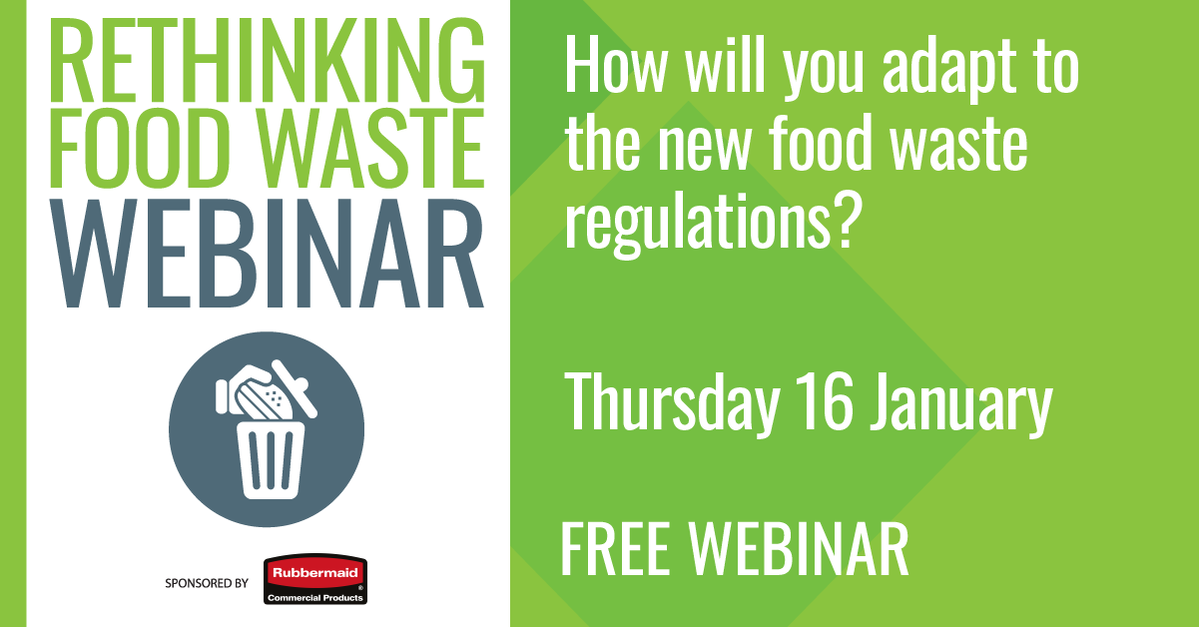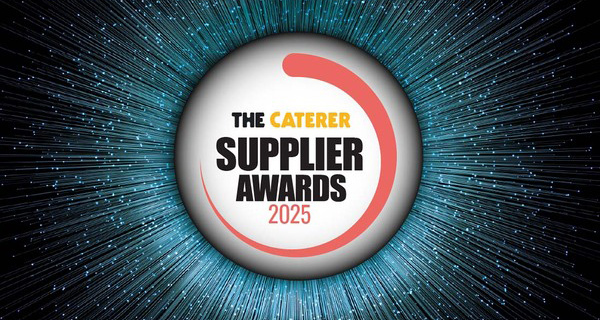Fish and chips: has the national dish become a luxury?
Hospitality sites wanting to serve what was the ‘working man’s staple’ are now sailing the tides of fluctuating pricing, writes Will Hawkes
It’s half past 12 on Monday morning and Maggie’s Cafe in Hastings is close to full. On the first warm day in June, the prospect of fish and chips by the sea has lured customers from near and far, and half an hour after opening most tables are taken. Outside, huge seagulls – raised on pilfered chips, no doubt – are swooping and squawking above the sleepy Old Town, but inside there’s a gentle buzz of human anticipation.
Maggie’s, which sits above the local fish market in a traditionally black-painted structure, yards from the shingle beach, is pretty much the acme of fish and chips restaurants – which is presumably why American TV network NBC chose to include it in a news section on the sector’s problems in May.
There can’t be many places in the south-east of England, either, with a greater density of fish and chips shops than this historic corner of Hastings, but even here the serious issues facing Britain’s national dish are impossible to ignore.
“It’s tough,” says Lionel Copley, who runs Maggie’s with business partner Stan Krezelok, having taken it on from founder Margaret Banfield in 2016. “It’s really tough. The price of everything is crazy. What was a working man’s staple has become a luxury.”
It’s a concern shared by operators around the country: in a survey carried out by frying range producer KFE (‘The Fish and Chip Survey 2024’, drawn from interviews with 100 operators around Britain in April and May), 36% identified rising costs as their top concern, with worries about staff recruitment (25%) and the impact of VAT (21%) just behind. There’s a lot to fret about at the moment, it seems.
And yet many are still optimistic: 75% of operators surveyed by KFE plan to invest in their businesses over the next 12 months. On a sunny Hastings day, that’s understandable – but is it justified, and what is giving them cause to remain so positive?
Fluctuating fish pricing
Maggie’s is not short of accolades. Alongside the endorsement of NBC’s Josh Lederman (“I’ve never been a fan [of fish and chips] before …but this is pretty good stuff” he told US viewers), it has been named one of the nation’s finest by The Times and The Observer, amongst others.
You can see why. Quality is really high: crispy batter, great chips, wonderfully fresh and moist fish – much of it landed yards away on the Stade, as the boat-filled working beach in front of the café is called. This sort of quality doesn’t come cheap, of course. Raw materials are expensive at the moment.
Maggie’s is currently paying between £12 and £15 a kilogram for cod, which makes pricing difficult as it fluctuates regularly; the price of oil went up dramatically but has come down a bit recently; and potato prices are double what they were. A portion of cod and chips now costs £15.50.
“We’re under no illusions – this is a café, not a restaurant,” says Copley, who also runs the Old Rectory, a boutique hotel in Hastings. “There’s a ceiling on what we can charge. We’re slightly dearer than the competition, albeit not in all areas. The ingredients [prices] are crippling us.”
Then there’s staffing, which has affected how Maggie’s operates. A takeaway operation was discontinued last year due to a combination of staffing and weather issues, and things are not getting any easier. “We had a meeting about it on Saturday,” says Copley. “It’s coming up to the high season, and we will scrape through. During the pandemic we lost a lot of staff who decided this wasn’t what they wanted to do, and it’s been the same since then.”
The venue’s response to these problems has been to focus on quality, particularly those elements that set it apart from the competition. Maggie’s offers homemade tartare sauce and fish cakes, beer from local brewery Long Man and a daily list of specials that takes in anything from skate to monkfish and fish chowder. “We do what we can,” says Copley. “It’s more expensive to make our own fish cakes, for example, but the margin is better.”
The result of that, as demonstrated by the frequently ringing phone on a Monday lunchtime (“People don’t tend to book ahead now,” says Copley, “they’ll often decide on the day”), is a very loyal customer base. “We have quite a varied clientele,” he adds. “We have people who’ve been coming for 30 years, and we pick up on the trendy customers too. Our reviews are good on TripAdvisor, and that helps.
“Fish and chips is still popular. There aren’t many days when we’re not busy. But we have to keep standards high, we have to keep constantly upping the ante.”
Fish and chip portion variation
One quirky aspect of fish and chips is the way in which portion sizes vary around the country. According to the KFE report, the average size for a regular fish is 7-8oz, although some shops are offering regular portions as large as 12oz. The smallest regular portion recorded is 4-6oz. Almost a quarter of those surveyed (23%) admit to having no idea as to the weight of chips served with each portion.
KFE managing director Paul Williams says: “The fact that many staff and operators are unsure of what they are giving away is worrying. For profitability, shops need to get a handle on this. We are one of the only industries where portions vary so widely. With fish and chips, customers do not know what they are going to get from one shop to another – and sometimes even from one visit to another at the same shop.”
Where customers do have very clear expectations, though, is on what fish will be on offer: historically, cod in the south and haddock in the north. Plenty of operators, though, think it’s time to break this duopoly – like Freemans Event Partners, an event catering business that started out as a fish and chip van at Silverstone nearly 50 years ago.
“To ensure that our price rises have been minimal we have sourced alternative white fish options, such as pollock,” says Lee Davies, operations director. “These alternative options are also more sustainable, due to the fact that they have not been overfished, which is another reason why we have been able to keep our prices consistent over recent years.”
Direct Seafoods, meanwhile, thinks operators shouldn’t name the type of fish they’re using on the menu, allowing them to sub in whatever makes economic sense at the time. “Cod has always been a traditional favourite, but this isn’t the only choice available,” says Natalie Hudd, director of sales. “Operators can use many alternative white fish, with the trick being not to name the species of fish on your menus. Frozen pollock, for example: not only is it more sustainable, but it is also very reasonably priced.”
Ready to go
There are plenty of pre-prepared options. Richard Ellison, marketing and events manager at Fairway Foodservice, says they can provide the full package. “Under our Fairway Assured brand, we offer battered cod, mushy peas, tartare sauce and a variety of chips, from classic to our new super crispy Fairway Excellence gourmet fries, for those who want a more premium offering for customers,” he says.
Perhaps it’s time to offer customers an alternative potato option? Funnybones Foodservice’s development chef Tom Styman-Heighton thinks so, highlighting ‘tater tots’ – an American option – and fries made with Cassava, “a root vegetable which has a slightly sweet yet nutty taste”.
“Chunky British chips are a must-have, but more and more customers are looking for something new and exciting,” he says. “Adding alternative spud-based sides to the menu gives customers more choice, and a greater sense of control over their order. Tater tots are incredibly versatile. Position them as a premium alternative to chips to increase revenue, add to a sharing board for casual munching, or offer a loaded version with pulled meats, chilli or grilled veggies.”
Aviko, meanwhile, offers a range of chip options. Mohammed Essa, commercial director, suggests operators check out SuperCrunch Fries. “They’re made from superior spuds that produce longer cut chips, giving operators a better yield per case, helping them boost profits and maximise profit margins,” he says.
Middleton is celebrating 30 years with a special batter mix called ‘Blend 30’. Sales manager Ryan Baker says: “It’s the ultimate product, offering that classic golden colour, perfect crunch texture and flavoursome batter. Specifically designed to sit longer in the holding cabinet, it is the perfect blend for both takeaway and delivery, and it cooks quicker than regular batter, helping operators serve quality food faster than ever.”
There seems to be plenty of optimism around. In Hastings, Copley is dreaming of less economically challenging times. “I hope things settle down and what we do becomes a little bit more affordable,” he says. “It’d be nice if things settled down a bit.”
Suppliers
Direct Seafoods www.directseafoods.co.uk
Fairway Foodservice www.fairwayfoodservice.com
Funnybones Foodservice funnybones.co.uk
KFE www.kfeltd.co.uk
Long Man Brewery www.longmanbrewery.com
Middleton Foods middletonfoods.com


